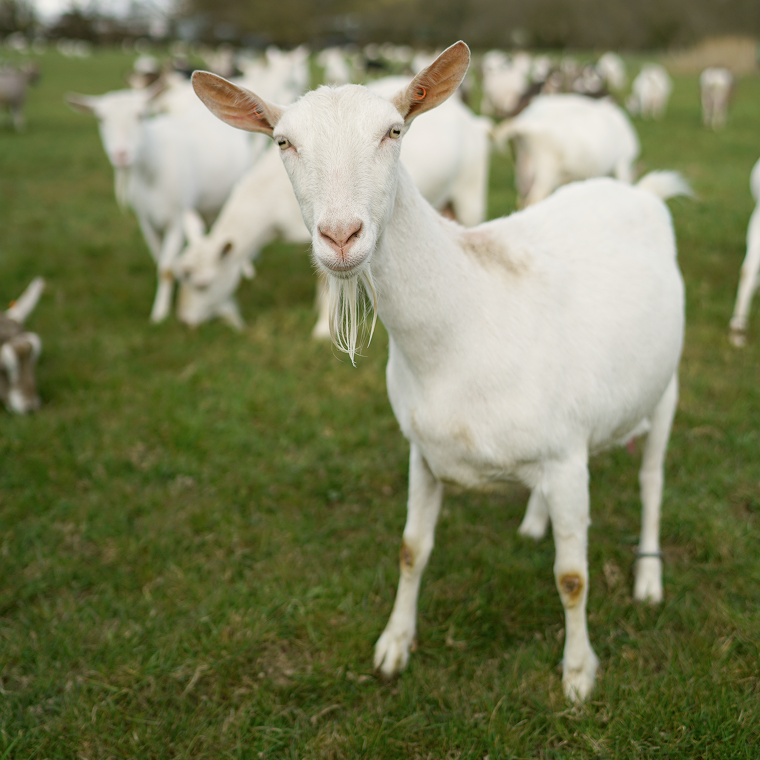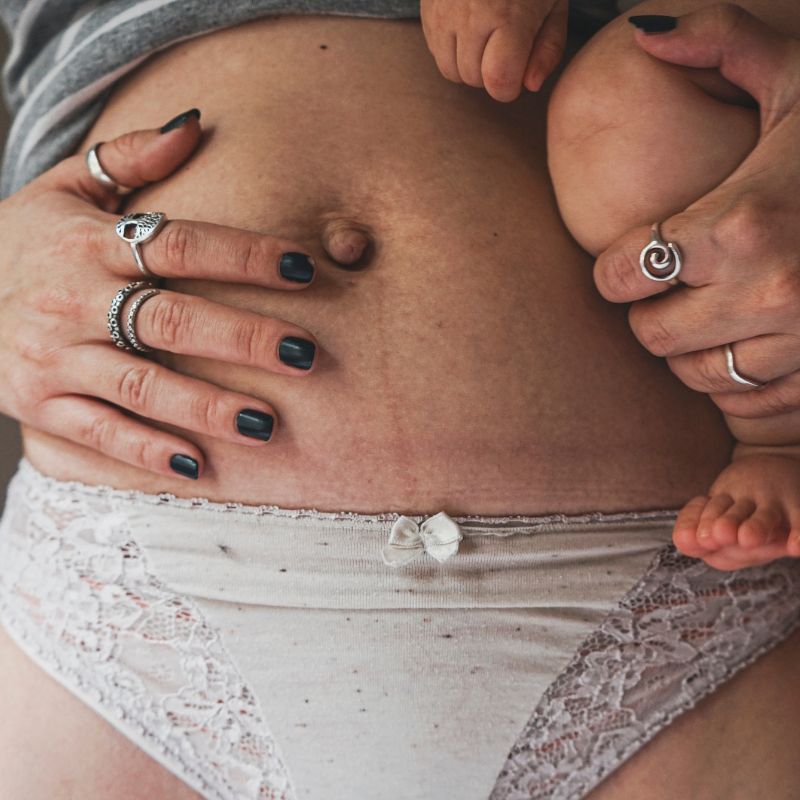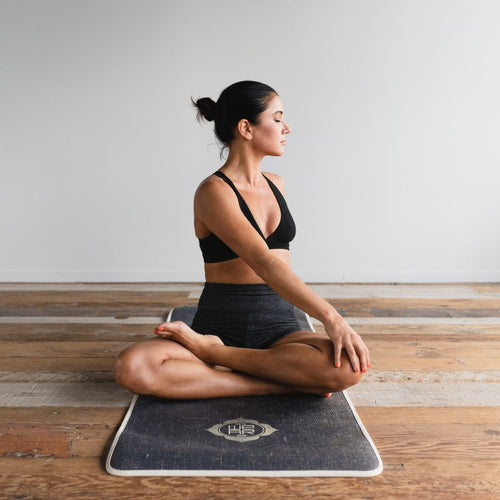For many parents a newborn’s somewhat random sleep patterns and sleep associations can feel overwhelming, but we’re here to take the guesswork out of it. As long as your baby is sleeping well, feeding well and you’re following up to date guidance, you’re doing great. We’ll take you through understanding the unique sleep patterns of a newborn, how to make bedtime a little easier and most importantly how to create a safe sleep environment.
Understanding Newborn Sleep Patterns & Creating a Sleep Routine
Newborns spend most of their early days in a dreamy daze, but sleep is more than just a way to recharge - it plays an essential role in their physical and cognitive growth, as well as memory consolidation. On average, your newborn will snooze for nearly 16 to 18 hours a day, but don’t forget, these hours aren’t a continuous stretch (wouldn’t that be a dream?) they’ll be broken up with the need to feed.
Newborn Sleep Patterns:
- Newborns sleep 8 to 18 hours per day varying for each baby, in 2-4 hour periods between feeds.
- Frequent waking is common due to short sleep cycles and feeding needs.
- Sleep patterns evolve due to growth spurts, teething, and illnesses.
- More consistent sleep patterns emerge around 3 months.
Infant Sleep Schedule:
- Infants cannot tell day from night when newborn.
- Longest sleep stretch may occur during the day.
- Frequent waking is healthy and normal for newborns.
- Expect longer sleep periods by the 3-6 month mark.
- Longer sleep is a sign of brain and body maturation.
Traveling With A Baby And Sleep Routines:
- Pack a travel cot, bedding, sleeping bag/ swaddle blanket
- Some hotels can provide cots, but make sure cot is clear and mattress is flat
- Aim to stick to your baby’s usual sleep routine
- Check room is between 16-20 degrees
How To Create A Safe Sleep Environment For Infants
When shopping for your nursery essentials and setting up your baby’s sleep space, safety always comes first. Cot bumpers, pillows, sleep pods and heavy bedding can pose a risk of baby overheating, obstructing baby’s airway or increasing the chance of Sudden Infant Death Syndrome (SIDS). They might also affect the baby’s ability to breathe freely if they roll or turn. Follow these tips:
- Safest place for a baby to sleep is in their own clear, flat, separate sleep space such as a cot or Moses basket.
- Baby should sleep in your room until they’re at least 6 months old.
- Baby should always sleep on their back.
- A firm, flat, waterproof mattress with no raised or cushioned areas is recommended.
- Avoid products like swings and baby bouncers as sleep spaces.
- If baby falls asleep in a pram, car seat, bouncer or carrier, move them to their designated sleep space.
- Cot or Moses basket
- Portable sleep space such as a Moses basket, travel cot or carry cot
- Mattress
- Sleeping bag or blanket/ swaddle blankets and sheets
- Room thermometer
- Products to avoid:
- Pods or nests
- Pillows, duvets or thick, heavy bedding
- Cot bumpers
- Hammocks
- Sleep positioners
For more advice on sleep safety head to The Lullaby Trust website here.
Tips To Transition From Bassinet To Cot
Making the transition from a cosy bassinet to a larger cot is a big milestone for both baby and parent! But it doesn’t have to be scary - with a bit of patience, the right approach and our tips, it can be smooth sailing.
- Start Slowly - Begin by having your baby take daytime naps in the cot so they can get used to their new environment.
- Keep It Consistent - Make sure that the bedding, mobiles or lullaby music from the bassinet are also in the cot.
- The Right Conditions - Keep the room’s lighting, temperature and noise level consistent with what your little one is used to. If your bassinet has a white noise machine or a particular lullaby playlist, keep the same energy going in the cot too.
- A Smooth Transition - Maintain your baby’s regular bedtime routine, whether it’s a warm bath, a gentle lullaby or bedtime story. This will signal sleep time, regardless of the change in surroundings.
Co-sleeping vs. Independent sleep
Co-sleeping can be a lovely bonding experience, but always be aware of the risks and best practices to reduce the risk of SIDS. For more information on co-sleeping refer to the NHS guidelines here.
- Never co-sleep if someone has drunk any alcohol, if they’re smoking or if they’ve taken any drugs or medication that causes drowsiness.
- If your baby was born prematurely (before 37 weeks) or weighed under 2.5kg at birth, co-sleeping is not advised.
- To make co-sleeping safer, keep adult bedding and pillows away from the baby to prevent overheating or covering their heads. Let your baby sleep on their back, avoid bringing other children or pets into the co-sleeping space and make sure the baby can’t get wedged, fall or be trapped between the mattress and the wall.
- Never leave the baby alone or unsupervised.
How To Establish A Sleep-Friendly Nursery And Tips To Soothe Baby At Bedtime
When it comes to creating a calming bedtime environment, you might want to think about including soft, calming colours, dim, warm lights and a quality white noise machine that echoes the comforting sounds of the womb. Don’t forget about your comfort too - a cosy feeding nook can make those midnight feeds more manageable. Here are some more tips to help send baby to lullaby land:
- Keep the lights dim or the room dark with a nightlight.
- Talk with a quiet voice and keep conversation to a minimum.
- Once your baby is fed and changed, put baby down to sleep before they become drowsy.
- Don’t play or over excite your baby.
- Establish a bedtime routine at night; bath, baby massage, story, lullaby and bed.
Calming a Fussy Newborn:
- Try to recreate the familiar environment of the womb.
- Swaddling and white noise mimic the snug feeling and sounds of the womb.
- Soothing car rides or bouncy, rocking dance movements may also help.
- Stroking their back, massaging motions and cuddles are also great to calm your baby.
- Persistent fussiness may indicate hunger, discomfort, or illness.
Addressing Feeding And Sleep Associations
From the moment they're born, babies start associating certain actions and sensations with comfort - the strongest one being feeding and sleep. It makes sense – being cuddled close and experiencing the soothing act of feeding often lulls them into a peaceful slumber. But as babies grow, this connection can sometimes become more of a crutch than a comfort. They might start wanting a feed every time they’re tired, even if they’re not actually hungry. Not only can this be tiring for parents, it also might not give babies the chance to learn self-soothing techniques.
Breaking the feeding-sleep association doesn't mean you need to stop feeding your baby when they're drowsy. Instead, aim to gradually introduce other comforting routines, like gentle rocking or lullabies and over time, your baby will begin to understand that sleep can come without always being fed.
Sleep Training Methods
It is worth noting that the most recent research on sleep training has only been done on infants over 6 months because of the concerns about the effect on younger babies. Newborns need to wake regularly for feeds so cannot sleep train. Most babies can self-soothe and are less likely to need a night feed between 4-6 months. Research shows that sleep training babies under 6 months doesn’t improve sleep outcomes for babies or parents.
- Cry it Out Method: This method allows the baby to cry without you rushing to comfort them to teach them to self-soothe. This method is a little controversial as many experts and parents find it unnecessary when there are other more gentle approaches. Always double check their needs are met (their nappy is dry and they’re not hungry or poorly) and that they are safe before trying out this method.
- Ferber Method: Similar to CIO, but slightly more gentle, you still let your baby have their cry but you pop in now and then to give them some reassurance. It's a more controlled approach that encourages self-soothing while still giving them the comfort they’re craving.
- The Chair Method: This is where you start off right next to the cot, giving them a little bit of comfort if they fuss, but night by night you move further and further away. Before you know it, you’re out of the room and they’re snoozing on their own.
- The Fading Method: This one is the most chill of them all. Instead of strict rules, you tweak your baby’s bedtime bit by bit. Experiment by pushing bedtime a bit later or skipping one of their afternoon naps. Eventually you’ll find that sweet spot when your little one drifts off like a dream.
Managing A Sleep Regression
What Are Sleep Regressions & When To Expect Them?
When it comes to sleep and your baby, it can sometimes feel like one step forward, five steps back, but just know this is completely normal. You might think that you’ve nailed their sleep routine and all of a sudden they turn into a night owl. Welcome to sleep regression. Sleep regression can often pop up around 4, 6, 8, 12 and 18 months, sometimes even at 2 years old, but not every baby will experience this - you might have yourself a sleeping champ. Things that cause sleep regressions can include learning to crawl, starting on solids or teething pains but the good news is, it’s all just a phase.
Understanding Developmental Changes Affecting Sleep:
- Milestones Mess with Sleep: As babies grow, they hit milestones like crawling, walking, and babbling. This brain activity can disrupt their rest.
- New Experiences: Introducing solids and teething can stir up their routine.
- It’s All Normal: Remember, all these changes are a part of their growth journey.
Coping Strategies During Regression Phases:
- Consistency is Key: Even when things aren’t going to plan, stick to your bedtime routines as much as possible.
- Flexible Nap Schedules: If your baby's sleep seems off, try adjusting nap times slightly.
- Extra Comfort: Some nights might call for additional cuddles or a few more lullabies.
- Talk it Out: Share your experiences and feelings with fellow parents. You're not alone in this!
- Remember It’s Temporary: Sleep regressions are just phases. They come, and then they go.
- Stay Calm & Rest When You Can: Catch up on your sleep whenever possible. A rested parent can better navigate the challenges of sleep regressions!
Hang in there – each regression is just a stepping stone in your baby's amazing growth journey.
So there you have it, all the tools you will need to create a safe and sleep-friendly environment with some tips on what to expect from their ever changing sleep patterns. All babies are different and their sleep patterns, associations and preferences will also be different. As long as your baby is warm, safe, fed and changed, sometimes all they need is a cuddle or your reassuring voice to help send them off to the land of nod. Enjoy those precious moments as they grow so quickly.
For more new parent’s advice check out our article: Tips For New Parents.

















